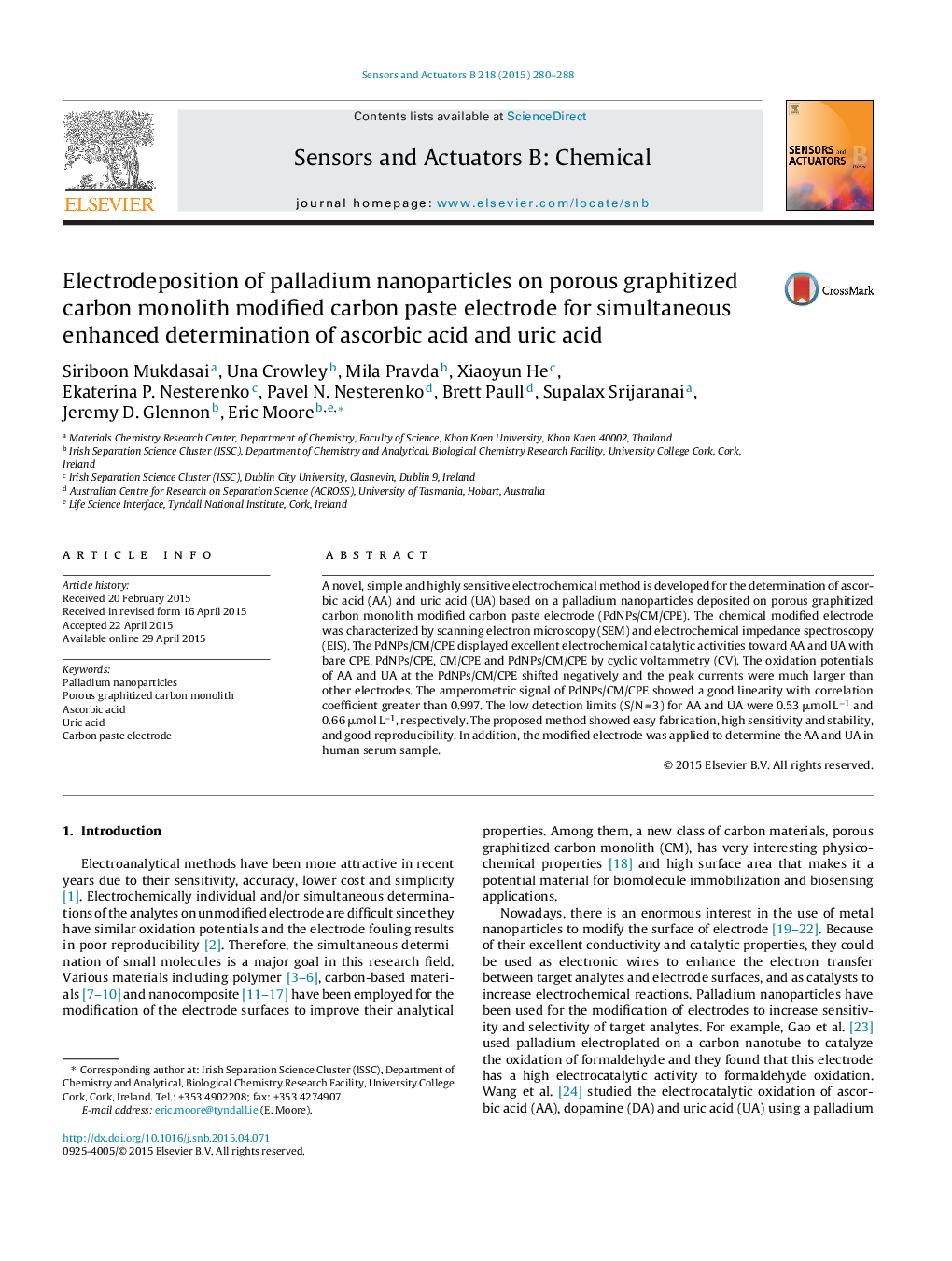| Article ID | Journal | Published Year | Pages | File Type |
|---|---|---|---|---|
| 739835 | Sensors and Actuators B: Chemical | 2015 | 9 Pages |
•Palladium nanoparticles deposited on carbon monolith modified carbon paste electrode (PdNPs/CM/CPE) was successfully fabricated.•The PdNPs/CM/CPE could simultaneously separate and detect AA and UA signals into two well-defined voltammetric peaks.•The PdNPs/CM/CPE has demonstrated low detection limits.•The PdNPs/CM/CPE achieved good reproducibility with stable electrochemical responses observed.
A novel, simple and highly sensitive electrochemical method is developed for the determination of ascorbic acid (AA) and uric acid (UA) based on a palladium nanoparticles deposited on porous graphitized carbon monolith modified carbon paste electrode (PdNPs/CM/CPE). The chemical modified electrode was characterized by scanning electron microscopy (SEM) and electrochemical impedance spectroscopy (EIS). The PdNPs/CM/CPE displayed excellent electrochemical catalytic activities toward AA and UA with bare CPE, PdNPs/CPE, CM/CPE and PdNPs/CM/CPE by cyclic voltammetry (CV). The oxidation potentials of AA and UA at the PdNPs/CM/CPE shifted negatively and the peak currents were much larger than other electrodes. The amperometric signal of PdNPs/CM/CPE showed a good linearity with correlation coefficient greater than 0.997. The low detection limits (S/N = 3) for AA and UA were 0.53 μmol L−1 and 0.66 μmol L−1, respectively. The proposed method showed easy fabrication, high sensitivity and stability, and good reproducibility. In addition, the modified electrode was applied to determine the AA and UA in human serum sample.
